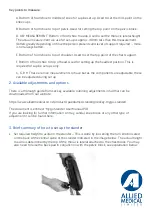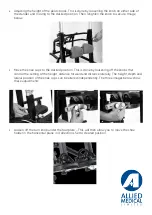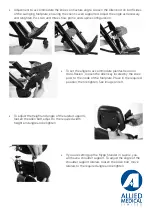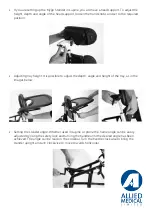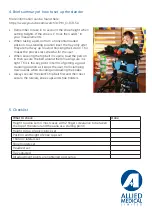
Key points to measure:
A. Bottom of foot/shoe to middle of knee for supine set up. Used to set the mid-point on the
knee cups.
B. Bottom of foot/shoe to top of pelvis. Used for setting the top point on the pelvic block.
D. KEY MEASUREMENT: Bottom of foot/shoe to axilla. Used to set the thoracic lateral height.
The actual measurement we use for set-up is approx. 40mm less than this measurement.
(Differs greatly depending on how the person presents and level of support required – more
is not always better)
E. Bottom of foot/shoe to top of shoulder. Used to set the top point of the chest support.
F. Bottom of foot/shoe to top of head. Used for setting up the headrest position. This is
required for supine set ups only.
C, G & H. These are nice measurements to have but as the components are adjustable, these
can be adjusted during set up.
2. Available adjustments and options
There is a thorough guide from Leckey available, outlining adjustments in full that can be
downloaded from our website:
https://www.alliedmedical.co.nz/products/paediatrics/standing/leckey-mygo-stander/
The document is entitled: ‘’Mygo Stander User Manual PDF’.
If you are looking for further information on tray, sandal, knee block or any other type of
adjustment it can be found here.
3. Brief summary of how to set up the stander
•
Set required height to axilla on the stander – This is done by loosening the turn knob located
on the back of the central spine of the stander indicated in the image below. The actual height
to axilla is determined by the top of the thoracic lateral attached to the chest block. You may
also need to raise the back pad in conjunction with the pelvic block, see explanation below.


